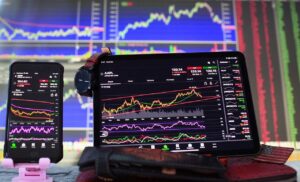It’s frustrating to see prices spike or plummet out of nowhere. As a trader, it’s natural to wonder if these fluctuations are orchestrated by those with the power to sway the market. Understanding how these manipulative tactics unfold is crucial to trading confidently and avoiding being caught off guard.
Unusual Spikes in Trading VolumeSudden and significant spikes in trading volume without any related news or announcements can indicate market manipulation. When the volume skyrockets without a clear reason, it could mean that large players artificially drive up the price to create buying interest. A steep decline often follows this sudden surge, trapping retail traders who buy into the hype.
You should pay attention to the trading volume relative to the asset’s historical average. Consistent organic volume growth is healthy, but erratic spikes that don’t align with market events are red flags. Monitoring crypto liquidity during such instances can help determine whether the trading activity is genuine or manipulated.
Watch Out for Pump-and-Dump SchemesPump-and-dump schemes involve artificially inflating the price of an asset to lure unsuspecting traders into buying in at higher prices. Once the price peaks, manipulators sell off their holdings, leaving regular traders with significant losses as the price crashes. These schemes often target smaller, less liquid assets that are easier to influence.
To protect yourself, be wary of sudden, unsustainable price increases, especially in lesser-known digital assets. If you notice a surge without legitimate news or market catalysts, it might be best to avoid entering a position. Monitoring community chatter, especially on social media platforms, can help you spot potential pump-and-dump schemes before they escalate.
Spoofing and Fake OrdersSpoofing occurs when traders place large buy or sell orders with no intention of actually executing them. The goal is to trick the market into reacting, either by causing panic selling or encouraging a buying frenzy. The manipulator cancels their orders once traders react and move the price, leaving traders who follow the trend at a disadvantage.
You can spot spoofing by observing the order book closely. If you see large orders repeatedly appearing and disappearing, it may indicate someone is trying to manipulate the market. By tracking these patterns, you can avoid falling into the trap of reacting to fake buy or sell signals.
Price Suppression TacticsPrice suppression is a manipulation strategy where large traders keep the price of an asset artificially low to accumulate more at a cheaper rate. This often involves placing continuous sell orders at slightly decreasing prices to create a downward trend, which discourages other traders from buying.
Identifying price suppression involves watching for a series of small, steady sell orders that cap the asset’s price growth. If the asset consistently struggles to break a certain level despite positive news or developments, it could be due to intentional price suppression by market manipulators.
Wash Trading to Inflate ActivityWash trading involves the same trader or group of traders buying and selling an asset simultaneously to create the illusion of increased trading activity. This is done to attract more buyers or sellers. It makes the asset appear more liquid and desirable than it is.
To detect wash trading, compare the trade volumes across different exchanges. If one exchange shows an unusually high volume not reflected on others, it’s a sign that something might be amiss. Also, keep an eye on patterns where trades seem too perfectly timed or repetitive. This could indicate coordinated wash trading efforts.
Sudden Price ReversalsSharp, unexpected price reversals are a hallmark of market manipulation, especially in illiquid markets. These reversals often occur after a price has been artificially inflated or suppressed. They lead to abrupt changes in direction that leave unsuspecting traders caught off guard.
If you notice a sudden and drastic change in price without any apparent market catalyst, it could be a sign of manipulation. To protect yourself, avoid chasing sudden price movements and consider setting stop-loss orders to limit potential losses if the market turns unexpectedly.
Large Buy Walls or Sell WallsMarket manipulators often place large buy or sell walls to influence an asset’s price direction. A buy wall can create the illusion of strong demand, encouraging traders to buy, while a sell wall can push prices down by overwhelming buyers. These walls are often temporary and can be pulled once the manipulator has achieved their goal.
Keep an eye on the order book. Large, round-number orders that appear suddenly and disappear just as quickly are often a sign of manipulation. Avoid making trades based solely on these walls. They can vanish instantly, exposing you to losses.
Social Media and Influencer HypeMarket manipulators sometimes leverage social media platforms and influencers to generate buzz around a digital asset. This hype is often used to drive up prices quickly, after which the manipulator sells off their holdings, leaving the average trader with heavy losses.
Be cautious when you see sudden endorsements or hype around a particular coin, especially if it’s coming from sources without a proven track record. Always cross-reference claims with reliable sources, and don’t base your trading decisions solely on social media buzz.


















